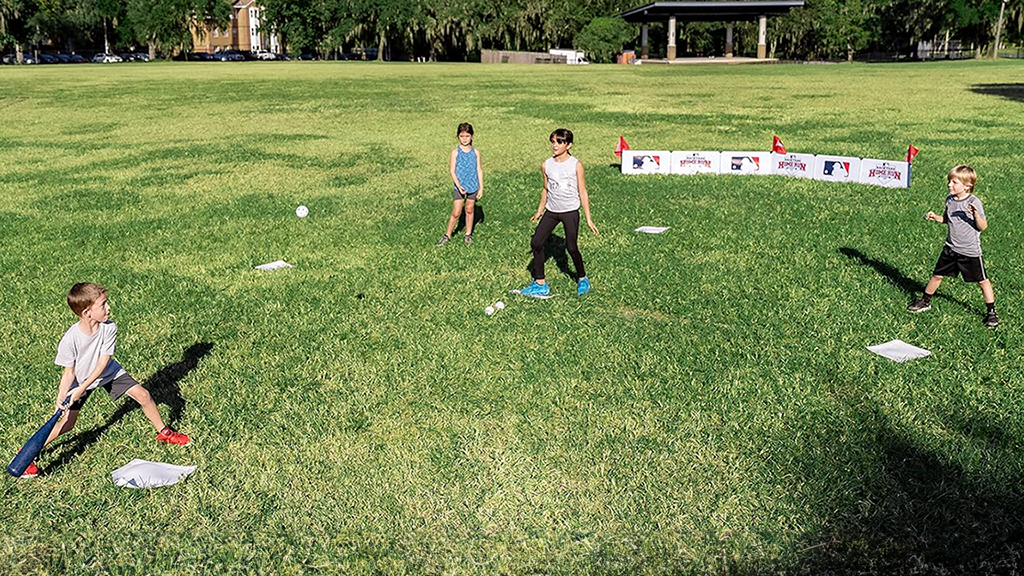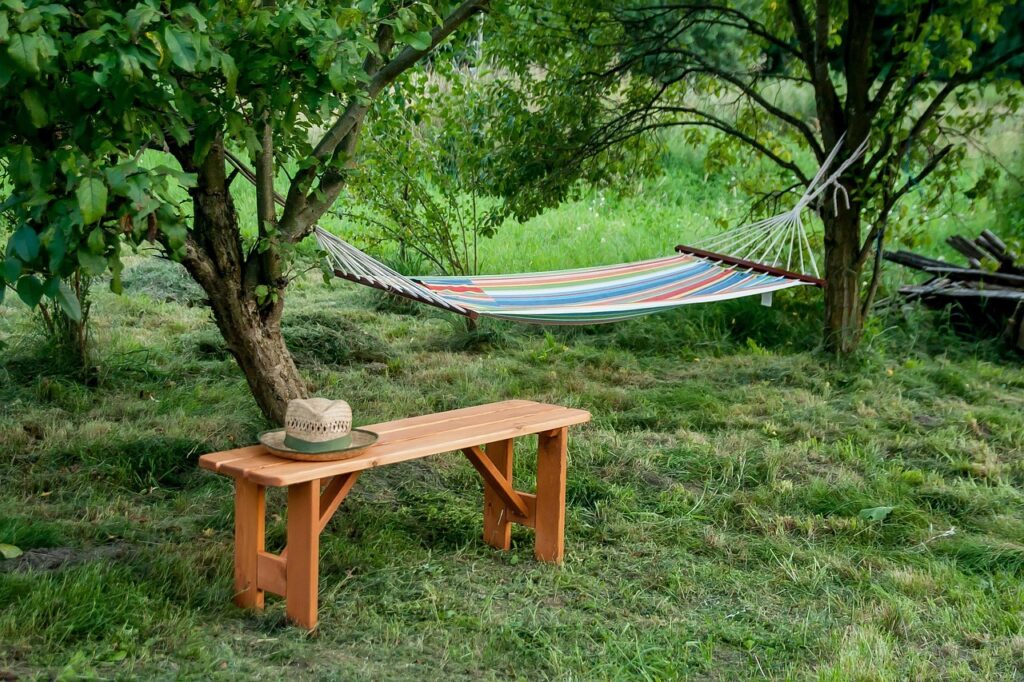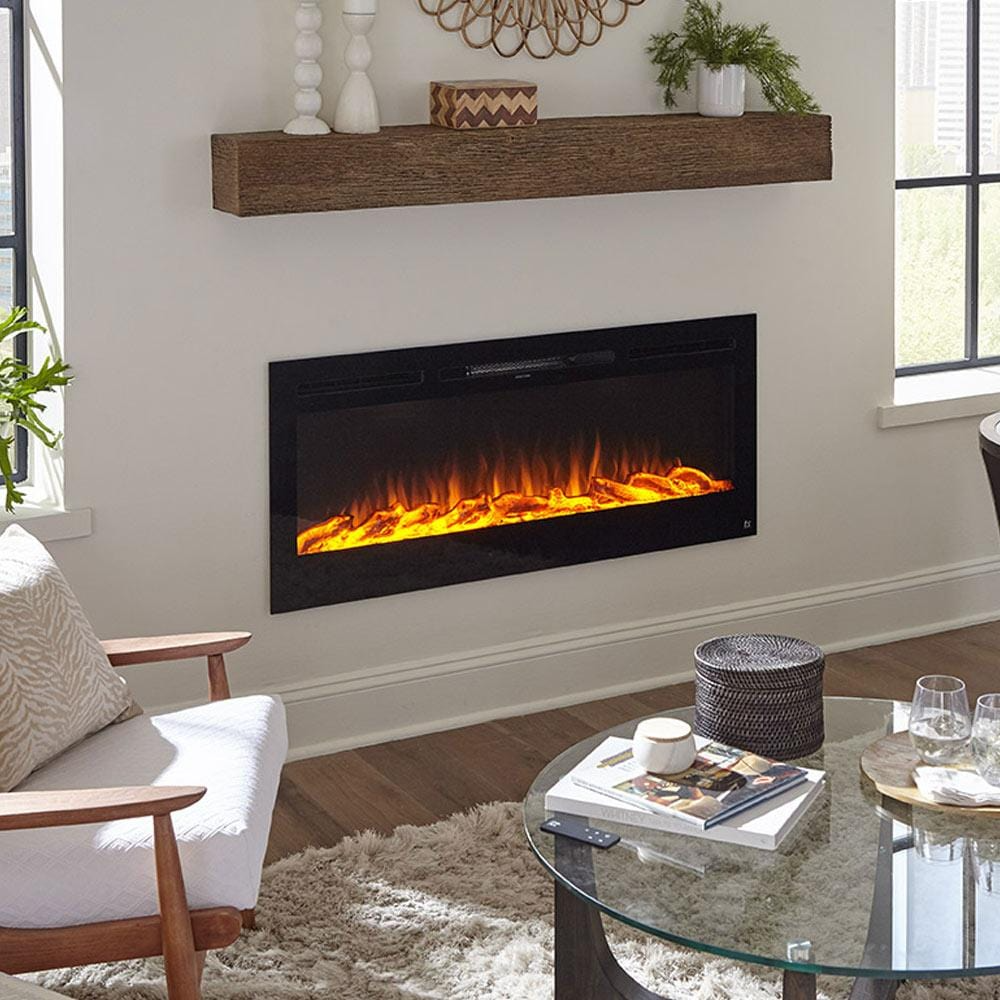Introduction
Summer afternoons, chirping birds, the crack of a bat against a whiffle ball—few things capture classic Americana like a casual game of backyard baseball. But you don’t need a manicured diamond or nine-player rosters to enjoy the sport at home. Whether you’re wrangling neighborhood kids, hosting an adults-only cookout, or looking for a family fitness tradition, this article shows how to play backyard baseball with minimal space, simple gear, and maximum fun.
Table of Contents
- Choose the Right Playing Area
- Essential Gear (Plus DIY Substitutes)
- Quick Field Layout & Dimensions
- Simplified Rules & Scoring
- Lineup & Batting Order Tricks
- House Rules for Small Yards
- Kid-Safe & Age-Adaptive Mods
- Competitive Variations & Party Formats
- Safety, Etiquette & Neighbor Peace
- Frequently Asked Questions
- Conclusion & Next Steps
(Tap any heading to jump there.)
1. Choose the Right Playing Area
Scout the flattest section of lawn, driveway, or nearby park strip. Ideal size is 40–60 ft from home plate to a makeshift outfield fence (hedge, net, patio wall). Check for:
- Breakables—close windows or set up away from glass.
- Trip hazards—fill holes, stash hoses, move lawn décor.
- Sun angle—set home plate so batters face east or north; afternoon glare is brutal.
- Neighbor proximity—leave enough buffer for foul balls and noise.
If room is tight, shorten the distance to 30 ft and swap a soft foam ball.
2. Essential Gear (Plus DIY Substitutes)
| Standard Item | Budget or DIY Alternative |
|---|---|
| Plastic or lightweight aluminum bat | Broomstick wrapped in grip tape |
| 9-in. whiffle ball (slots) | Foam stress ball, rolled-up sock |
| 3–4 throw-down rubber bases | Cardboard squares, paper plates |
| Home plate | Chalk outline, upside-down Frisbee |
| Pitching rubber | Stick, duct-taped line |
| Outfield fence/marker | Garden net, string between chairs |
Pro tip: Keep two ball types handy—a regulation whiffle for regular play and a high-visibility neon foam ball for twilight innings.
3. Quick Field Layout & Dimensions
A “true” Little League diamond is 60 ft per base, but backyard baseball flexes:
- Home → First: 30–40 ft
- Base paths: Straight line or slight arc if yard narrows.
- Pitcher’s spot: Midway between home and second (15–20 ft from plate).
- Outfield fence: Fence line, hedge row, or cones. Anything beyond = home run.
Mark foul lines with sidewalk chalk or garden hose. If space is extra tight, flip field orientation: place home plate at a corner so foul territory aligns with fences rather than windows.
4. Simplified Rules & Scoring
- Teams: 3–5 players each. If uneven, allow ghost runners—imaginary baserunners who advance one base per forced movement.
- Innings: 3–5 innings keep games under 45 minutes.
- Pitching: Underhand lob for kids, gentle overhand for adults. Four balls = walk, three strikes = out. Foul balls count as strikes except the final strike.
- Hits & Outs:
- Ball landing in fair territory and untouched = single.
- Landing past midfield marker = double.
- Over fence / designated line = home run.
- Caught fly or three strikes = out.
- Fielding: No gloves required. Tag runner or base before he/she arrives for force outs.
- Mercy rule: If a team leads by 10 runs after any full inning, call the game—or swap players to balance.
Adapt distances and strike counts to skill level; the goal is swings, not strikeouts.
5. Lineup & Batting Order Tricks
- Snake order: Bat 1→N, then N→1 in the next inning so everyone hits near the middle at least once.
- Rally dice: After each inning, roll a die—number shows how many spots the batting order shifts. Keeps suspense high.
- Designated pitcher: To speed pace, appoint one neutral pitcher throwing for both teams. Rotate every inning.
- Walk-up music on a speaker doubles the hype; cue 10-second song snippets from a phone playlist.
Equal swings = happier players; tweak order if a powerhouse slugger hogs the RBIs.
6. House Rules for Small Yards
- One-hop catches count as outs to reduce sprint distances.
- Automatic doubles for any ball that rolls into garden beds (no trampling plants!).
- No lead-offs or steals—runner leaves base only after bat-ball contact.
- Pegging allowed? Decide up front. For foam balls, tagging a runner by throwing is fair game; for plastic whiffles, outlaw pegging to avoid welts.
- Roof foul rule: If the ball hits the roof before landing, it’s foul—even if it drops fair.
Clear rules before first pitch = fewer arguments mid-game.
7. Kid-Safe & Age-Adaptive Mods
Ages 4–6
- Use oversize foam bat and 8-in. trainer ball.
- Place pitcher 10 ft away; allow batting tee for beginners.
- One base at a time; no strikeouts.
Ages 7–10
- Introduce strike count and outs, but cap at 5 pitches per at-bat.
- Soft “safety-flight” balls reduce sting.
- Rotate field positions every inning to build all-around skills.
Ages 11–14
- Full whiffle, 3-strike rule, allow bunts.
- Encourage switch-hitting to develop coordination.
- Track simple stats (hits, RBIs) on a clipboard for motivation.
Adults
- Add base-stealing if yard length permits.
- Use wood bat + pickleball for extra challenge and nostalgic crack sound.
- Optional “handicap”: bat opposite-handed to level talent gaps.
8. Competitive Variations & Party Formats
| Format | How It Works | Best For |
|---|---|---|
| Home-Run Derby | Each hitter gets 10 swings; most over fence wins. | Cookouts, limited daylight |
| Zombie Baseball | Once a runner scores, they join defense; last hitter standing wins. | Halloween parties |
| Baseball-Kickball Hybrid | Kick a playground ball, run bases; combine strike/kick rules. | Mixed-age gatherings |
| Speedball | 3-pitch maximum; batter must swing at third pitch. Fast, cardio-heavy. | Teen or adult fitness |
| Glow-in-the-Dark | LED whiffle balls and light-up bases after dusk. | Sleepovers, July 4th evenings |
Tournament tip: Print mini-brackets, set a time cap (e.g., 15-minute games) and rotate winners to the “A” diamond and others to the “B” bracket to keep all teams engaged.
9. Safety, Etiquette & Neighbor Peace
- Eye & Face: Foam balls for kids under 8; adults keep bats below shoulder height on practice swings.
- Noise: Quiet hours? Wrap bat tips with tape to soften sound, or shift games to daylight.
- Property respect: Retrieve fouls promptly, apologize for rogue balls, and offer to replace any damage.
- Hydration & Shade: Set a water cooler at third base; hats and SPF 30+ are mandatory for noon games.
- Inclusive spirit: Cheer good plays from both sides, rotate positions, and keep scores light. Backyard baseball lives or dies on fun, not trophies.
Frequently Asked Questions
Q1: How many people do I need?
Three per side is plenty (pitcher, fielder, catcher/rover). Even two-on-two works with ghost runners.
Q2: What if my yard has no grass?
Driveway or cul-de-sac games rock—just chalk bases and use a soft foam ball to protect car paint.
Q3: Is a whiffle or foam ball better?
Whiffle offers truer flight and satisfying curves; foam is safest for tight yards and younger kids. Keep both and swap mid-game as needed.
Q4: How do I keep kids engaged between at-bats?
Assign dugout roles—scorekeeper, DJ, ball shaggers—or run a parallel “skills station” (throwing accuracy into a laundry basket).
Conclusion & Next Steps
Now that you know how to play backyard baseball—from improvised fields to kid-friendly tweaks—it’s time to mark those foul lines and text the neighbors. Start simple: one bat, one ball, four plates. As your crew’s skills and enthusiasm grow, layer in home-run derbies, glow-ball nights, or even a summer-long stats board.
Above all, remember the golden rule: every player leaves smiling, slightly sweaty, and already asking, “Same time tomorrow?” Grab your gear and let the first pitch fly!



